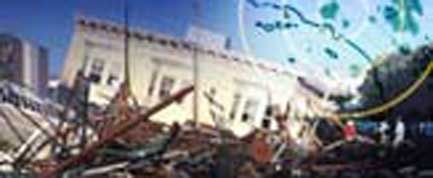Why Major Earthquakes are Underestimated

Monday's earthquake, which caused extensive damage and at least 330 deaths on two islands off the coast of Indonesia, was originally put at magnitude 8.2 by geologists. It was later revised to magnitude 8.7 - equal to five times more energy on the logarithmic scale.
Underestimating the strength of a large earthquake is common, according to Kerry Sieh of the California Institute of Technology.
The tsunami-causing earthquake that struck the same area on Dec. 26 last year was initially assessed as 8.2, then 9.0, and finally 9.3, as reported in February by LiveScience. This final estimate makes the tsunami-causing quake the second largest ever recorded. In the current issue of Nature, researchers report on follow-up analysis of this deadly event.
The difficulty with measuring the energy of a big quake is that they last longer. The Dec. 26 quake was the longest ever measured, at 10 minutes. A magnitude 6 earthquake, in contrast, typically lasts only a few seconds.
This longer rumbling time means that some of the energy spreads out in longer wavelength seismic waves. Many seismic detectors do not measure these longer waves, so they end up underestimating the energy output.
Could Monday's temblor end up being larger than a magnitude 8.7?
"It's possible," Sieh told LiveScience. "But it looks like this one is more well-behaved."
Sign up for the Live Science daily newsletter now
Get the world’s most fascinating discoveries delivered straight to your inbox.
For one thing, the March 28, 2005 quake was shorter - about 2-? minutes. It also appears to have originated from farther down in the crust - a fact that may explain why no major tsunami was generated.
"Most of the slip appears to have occurred deeper, so the seafloor wasn't displaced as much," Sieh said.
It seems likely that this second temblor was in part brought on by the Dec. 26 event. Pressure relieved in one patch of the fault line can result in more pressure at another patch - leading to a kind of domino effect.
In a commentary on the Nature results, Sieh drew attention to a cluster of giant earthquakes between 1950 and 1965. Seven of the 10 biggest earthquakes of last century occurred in this 16-year range, and five of these occurred in the northern Pacific.
It seems likely, said Sieh, we are seeing a similar clustering in the Indian Ocean now. The new concern is that the fault line has become vulnerable further southeast from where this week's quake occurred.
Earthquake Frequency
Average number each year globally:












